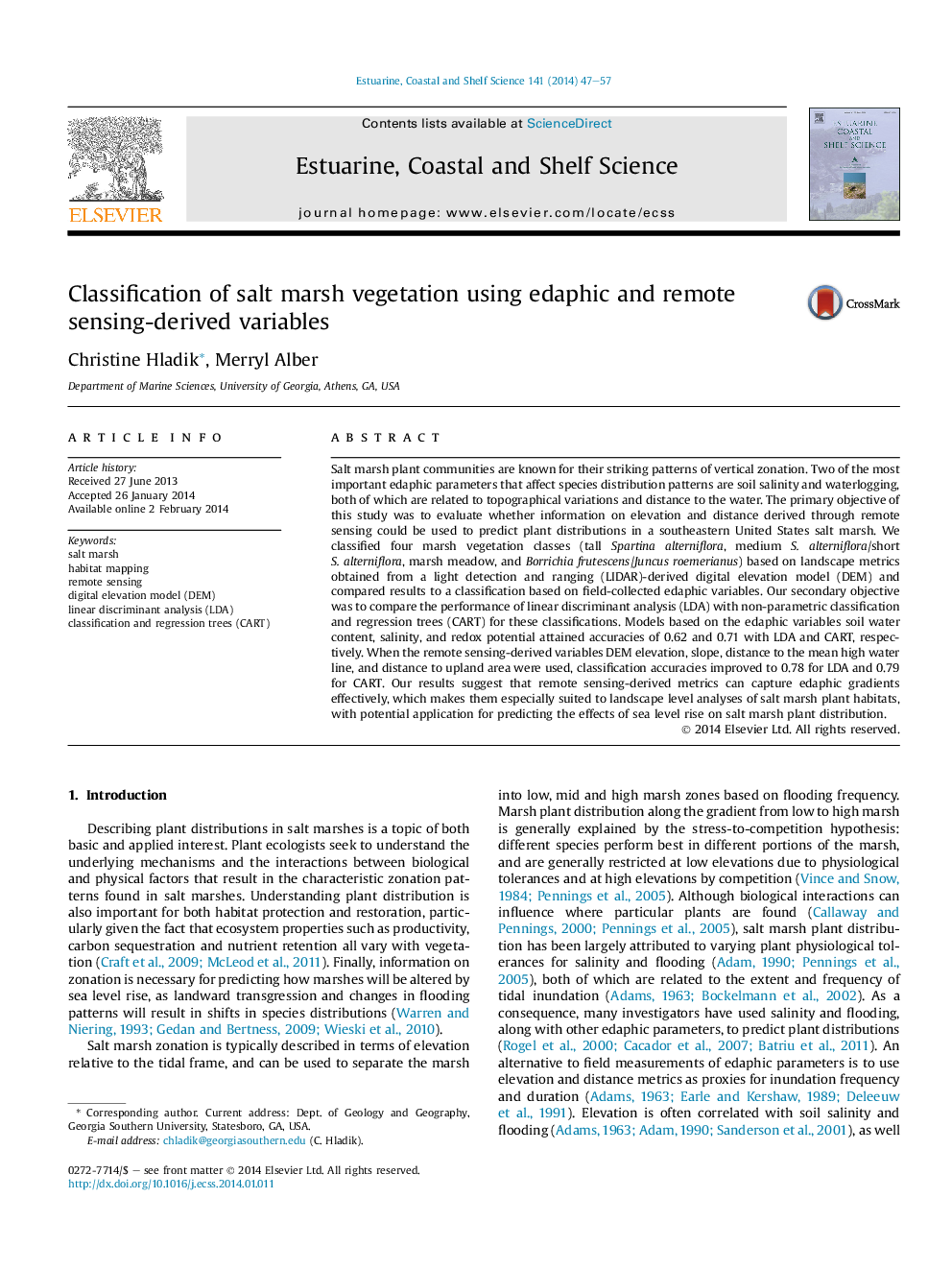| کد مقاله | کد نشریه | سال انتشار | مقاله انگلیسی | نسخه تمام متن |
|---|---|---|---|---|
| 4539705 | 1626655 | 2014 | 11 صفحه PDF | دانلود رایگان |
• Marsh vegetation was classified with both remote-sensing derived and field-collected variables.
• Linear discriminant analysis (LDA) was compared with classification and regression trees (CART).
• CART performed slightly better than LDA.
• With either classifier, remote sensing was better at predicting vegetation than field variables.
• Remote sensing-derived metrics are suitable for landscape-level analyses of salt marsh plants.
Salt marsh plant communities are known for their striking patterns of vertical zonation. Two of the most important edaphic parameters that affect species distribution patterns are soil salinity and waterlogging, both of which are related to topographical variations and distance to the water. The primary objective of this study was to evaluate whether information on elevation and distance derived through remote sensing could be used to predict plant distributions in a southeastern United States salt marsh. We classified four marsh vegetation classes (tall Spartina alterniflora, medium S. alterniflora/short S. alterniflora, marsh meadow, and Borrichia frutescens/Juncus roemerianus) based on landscape metrics obtained from a light detection and ranging (LIDAR)-derived digital elevation model (DEM) and compared results to a classification based on field-collected edaphic variables. Our secondary objective was to compare the performance of linear discriminant analysis (LDA) with non-parametric classification and regression trees (CART) for these classifications. Models based on the edaphic variables soil water content, salinity, and redox potential attained accuracies of 0.62 and 0.71 with LDA and CART, respectively. When the remote sensing-derived variables DEM elevation, slope, distance to the mean high water line, and distance to upland area were used, classification accuracies improved to 0.78 for LDA and 0.79 for CART. Our results suggest that remote sensing-derived metrics can capture edaphic gradients effectively, which makes them especially suited to landscape level analyses of salt marsh plant habitats, with potential application for predicting the effects of sea level rise on salt marsh plant distribution.
Journal: Estuarine, Coastal and Shelf Science - Volume 141, 20 March 2014, Pages 47–57
